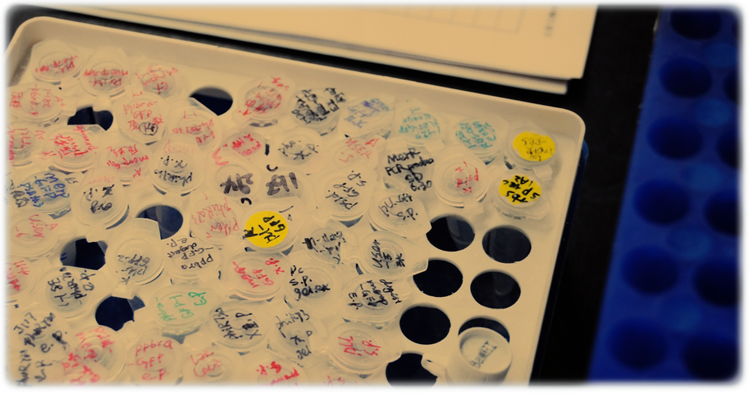Team:Peking S/project/hp
From 2011.igem.org
Spring zhq (Talk | contribs) (→Introduction) |
(→Introduction) |
||
| (18 intermediate revisions not shown) | |||
| Line 13: | Line 13: | ||
=== '''Introduction''' === | === '''Introduction''' === | ||
| + | <br> | ||
| + | [[File:pkushpall.jpg|680px]] | ||
| + | <br> | ||
| + | <br> | ||
| + | Synthetic biology is broadly defined as an area of intersection of biology and engineering that focuses on the modification or creation of novel biological systems that do not naturally emerge in nature [1]. As an emerging method, its potential applications range from tools for environment decontamination to medical diagnostics. | ||
| + | However, amounts of problems have been raised in many aspects. For instance, there is a public concern that synthetic biology might result in public danger, such as NDM bacteria strain that is resistant to all known antibiotics. Genetically Modified Organism (GMO) produced by conventional biotechnology, for example, genetic engineering, have already put forward very similar public-concerning risks. Therefore, it is worthy a lot to inspect the similarity and difference between synthetic biology and conventional biotechnology (in our case, genetic engineering) which might provide some valuable new guidance for us to prevent possible danger and to avoid ethical issues. Our inspection mainly focuses on four aspects below: | ||
| + | '''1. What is the public view towards synthetic biology and conventional biotechnology among high school students and college students?''' | ||
| - | + | '''2. What are the differences between synthetic biology and GMO?''' | |
| - | + | '''3. What are the possible risks posed by synthetic biology?''' | |
| - | + | '''4. What action should we take AND what kind of attitude shall we have?''' | |
| - | + | By answering these 4 questions above, we obtained schematics of current public view and social effect of synthetic biology, the possible issues that synthetic biology might face with and possible solutions to them. | |
| - | |||
| - | |||
| - | |||
| - | |||
| + | <br> | ||
| + | <br> | ||
| + | <html> | ||
| + | <a href="#top">Top↑ | ||
| + | </div> | ||
| - | <br><br> | + | <br> |
| + | <br> | ||
| + | |||
| + | </html> | ||
Latest revision as of 18:01, 5 October 2011
Template:Https://2011.igem.org/Team:Peking S/bannerhidden Template:Https://2011.igem.org/Team:Peking S/back2
Template:Https://2011.igem.org/Team:Peking S/bannerhidden

Human Practice
Introduction|Synthetic Biology vs. Genetically Modified Organism|Public Investigation|Risks and Measurements Analysis
|Acknowledgement&Reference
Introduction

Synthetic biology is broadly defined as an area of intersection of biology and engineering that focuses on the modification or creation of novel biological systems that do not naturally emerge in nature [1]. As an emerging method, its potential applications range from tools for environment decontamination to medical diagnostics.
However, amounts of problems have been raised in many aspects. For instance, there is a public concern that synthetic biology might result in public danger, such as NDM bacteria strain that is resistant to all known antibiotics. Genetically Modified Organism (GMO) produced by conventional biotechnology, for example, genetic engineering, have already put forward very similar public-concerning risks. Therefore, it is worthy a lot to inspect the similarity and difference between synthetic biology and conventional biotechnology (in our case, genetic engineering) which might provide some valuable new guidance for us to prevent possible danger and to avoid ethical issues. Our inspection mainly focuses on four aspects below:
1. What is the public view towards synthetic biology and conventional biotechnology among high school students and college students?
2. What are the differences between synthetic biology and GMO?
3. What are the possible risks posed by synthetic biology?
4. What action should we take AND what kind of attitude shall we have?
By answering these 4 questions above, we obtained schematics of current public view and social effect of synthetic biology, the possible issues that synthetic biology might face with and possible solutions to them.
 "
"